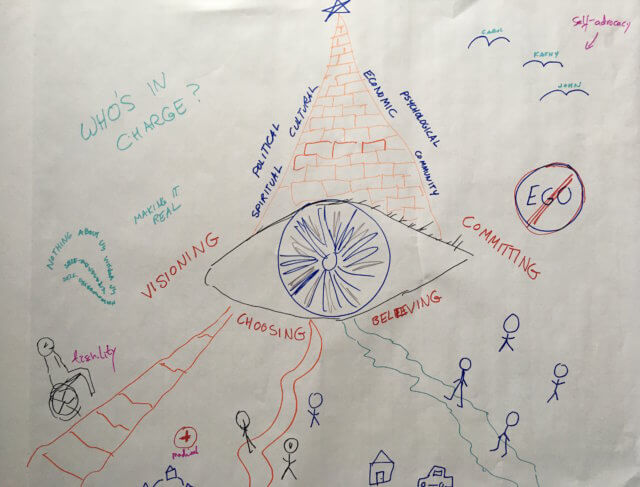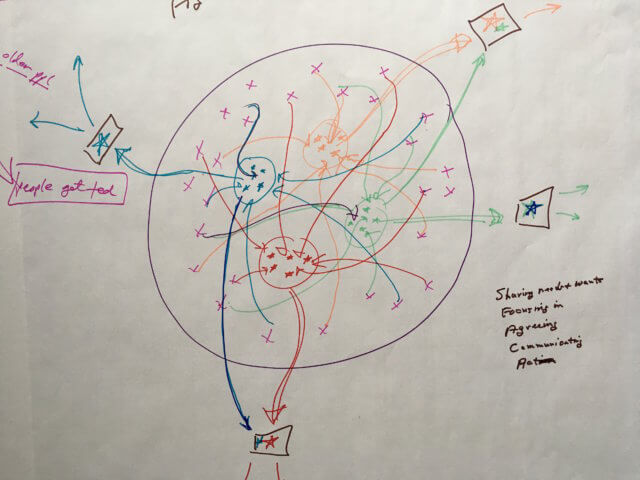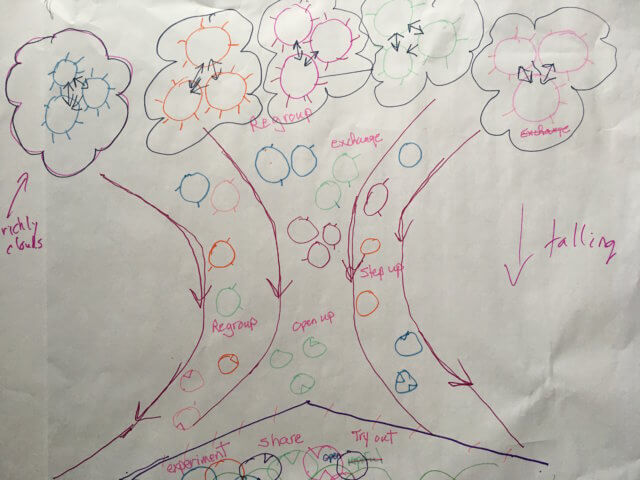Here’s a powerful way to help meeting design clients figure out what they really want and need.
Great — a client who doesn’t know what they want!
Recently, a client asked for help designing a new conference. Thirty minutes of discussion with three stakeholders revealed they hadn’t yet settled on the event’s specific purpose, scope, and format.
From my perspective, this is actually a great problem to have.
Why? Because most clients engage me after they are committed to programs and logistics that are not optimum for what they’re trying to accomplish!
The needs assessment trap
Conference design clients who “know what they want” have already decided on their “why?” and “who?“, have often fixed their “when?” and “where?“, and typically bring me in to consult at the “how?” stage. I understand their perspective because I also feel the temptation to pin down specifics — number of participants, duration, venue, budget, etc. I hope that in the process the event’s purpose and desired outcomes will become clearer.
It’s true that focusing on these details can help uncover what the client wants, and whether it’s realistic. {“Hmm, I think we’d need a lot more than $10K to bring together 200 scientists to plan how to eradicate malaria in Southern Africa.“} But this is a roundabout way of avoiding the all-important question that is rarely fully and productively explored:
“What is the meeting for?”
How to explore what meeting design clients want and need
As a designer, when you have the opportunity to work with clients on the “why?” and “who?” questions, you receive a gift: the possibility of creating an event that truly meets their wants and needs.
So how can we help meeting design clients figure out what they really want and need?
I doubt there’s a definitive process, but I’ve had great success with the following approach, adapted from Eric de Groot’s and Mike van der Vijher’s excellent book Into the Heart of Meetings.
Rather than talking with clients about what they want and need, I ask them to visualize and draw it.
First, I ask each individual stakeholder to observe a picture that comes to mind when I ask them what the meeting is for. I encourage them not to censor what first comes up, and give them a little time to embroider and notice details. No discussion takes place.
Then I point out that an effective meeting changes something. {“If you go to a meeting and nothing important changes for you, it probably wasn’t worth attending, right?”} I ask each person to visualize the meeting as something concrete, and then visualize how that thing is changed by the meeting.
While this is going on, I lay out large sheets of flip chart paper and plenty of fine tip color Sharpies, spread around the room so no one will worry about other people watching them draw. After checking everyone has something in mind, and reassuring them that the quality of their drawing is totally unimportant, I ask my clients to simultaneously draw what they have visualized.
I give people the time they need to make their drawings.
Once drawings are complete, we explore each drawing together, one at a time.
Part of the beauty of this work is that the resulting drawings are somewhat self-explanatory, so I will simply share here the three drawings my clients made, with a brief summary of our subsequent interpretation and discussion.
Stakeholder A
This stakeholder saw the conference as a place for defining a vision for future work. She envisioned professionals and volunteers from various relevant constituencies (health, disability, housing, transportation, etc.) attending without ego, supporting self-advocacy, and creating “a yellow brick road” participants could then walk on to eventually get to Kansas (the home destination).
Stakeholder B
This stakeholder saw the conference as a plate of tasty foods mixed into a plate of spaghetti — a nourishing meal for attendees who would then use the resulting connections and relevant combinations of important ingredients to work on specific projects.
Stakeholder C
Stakeholder C saw the conference as a sky of “tricky clouds” that bumped into each other and created new combinations, via regrouping and exchange, of weather conditions that fell like rain to a lake of subsequent experiments and further sharing.
Observations from this exercise
- The drawings are vague. This accurately reflects the still-forming perspectives that the three stakeholders were forming during our first meeting. Should this be a local/regional/multi-state conference? We don’t know yet — and that’s OK.
- All three stakeholder’s visions were consistent, with many common themes. This is a good sign that further event design development will be relatively harmonious. Often, this is not the case. The drawing process provides an effective and gentle way of uncovering important differences between stakeholders at an early stage. Then they can be recognized, acknowledged, and faced honestly.
- Some of the conference stakeholders could not be at the meeting. The drawings provided useful and concise summaries to the absentees.
General process observations
Here’s what happens when I facilitate this exercise for clients:
- Stakeholders’ visualizations surprise and please them.
- Exploring the drawings together quickly yields additional insights and creative ideas that were not obvious at first sight.
- One of the best features of this approach is that the stakeholders create/uncover the vision for the event themselves. They own their vision, rather than having one imposed on them from the outside. The meeting designer’s role, then, is to help interpret and guide what is uncovered and help turn it into a specific meeting design that is faithful to the stakeholder collective vision.
Conclusion
This is one approach to help meeting design clients figure out what they really want and need. Taking the time to do event visualization is only one part of a comprehensive design process. However, it includes early exploratory and creative work that, to the best of my knowledge, meeting planner education and textbooks ignore. Doing this work before an event design becomes limited by unconscious assumptions and/or logistical decisions pays rich dividends. If you use this or a similar process to explore early event design, I’d love to hear about it in the comments below!



